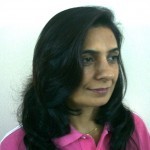 By Dr. Rita Khanna
By Dr. Rita Khanna
A clinical survey, conducted in medical wards, showed that 95% of the population suffers from tooth troubles. The strength of our teeth is a true barometer of the strength of our bones. The organ responsible for the growth of bones is the pituitary gland. So any posture, or Asana, which stimulates more blood to this gland, will give more strength to bones, including teeth. Sirshasana stimulates more blood to flow to the pituitary gland, which, in turn, maintains the strength of our teeth. Apart from strength, another factor is infection in teeth. The common disease involving teeth is called “pyorrhea”. “Pyo” in Greek means “pus.”
Important Causes for the Disease of Pyorrhea
The teeth should be used to bite, chew, and masticate food; but we seldom use our teeth properly, and pay for this negligence in the form of toothache, tooth decay, and pyorrhea.
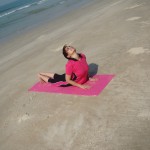 Many people are not aware that half of the digestion of food starts, and completes, in the mouth itself, by proper mixing of food with saliva. Saliva contains an enzyme known as “plylin,” which helps in the digestion of carbohydrates. Most of us eat very fast. This is called “gulping down food.” This food goes to the stomach, and the poor stomach has to work more; but it cannot break this bigger bolus, or particle of food, into a smaller one, so it is passed into the duodenum in the same form, then into the small intestine and colon, thus fermentation starts. Due to this, we get the trouble of dyspepsia, gas trouble, gas belching, which causes irritation of the mucous membrane, and thus, development of carcinoma of the colon. Therefore, mastication of food is important for the proper digestion of food, as well as the fact that it strengthens the teeth. Our Grandmas used to make chaklis (a kind of snack) and hard edibles so that we were forced to use our teeth to break and chew them. This also reduces the work of the stomach.
Many people are not aware that half of the digestion of food starts, and completes, in the mouth itself, by proper mixing of food with saliva. Saliva contains an enzyme known as “plylin,” which helps in the digestion of carbohydrates. Most of us eat very fast. This is called “gulping down food.” This food goes to the stomach, and the poor stomach has to work more; but it cannot break this bigger bolus, or particle of food, into a smaller one, so it is passed into the duodenum in the same form, then into the small intestine and colon, thus fermentation starts. Due to this, we get the trouble of dyspepsia, gas trouble, gas belching, which causes irritation of the mucous membrane, and thus, development of carcinoma of the colon. Therefore, mastication of food is important for the proper digestion of food, as well as the fact that it strengthens the teeth. Our Grandmas used to make chaklis (a kind of snack) and hard edibles so that we were forced to use our teeth to break and chew them. This also reduces the work of the stomach.
Along with this exercise, our teeth need to be kept clean. Despite all advice and health education, we do not care to brush our teeth regularly in the morning and at night. This causes germs to survive and invites dental disorders. The net result is aching teeth and caries in the teeth. The specific method of brushing the teeth should be explained by the parents to their children, as well as in school health education, which, in turn, will prevent most of the dental problems.
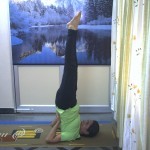 We are always fond of chocolates, and other sweets, which are the worst enemies of our teeth. They attack the enamel coating of teeth, and thus, produce caries. To prevent this, the mouth has to be washed immediately after eating these food particles. With this little care, our teeth can be made to serve us for a lifetime – for they are meant by nature to last longer, not to decay.
We are always fond of chocolates, and other sweets, which are the worst enemies of our teeth. They attack the enamel coating of teeth, and thus, produce caries. To prevent this, the mouth has to be washed immediately after eating these food particles. With this little care, our teeth can be made to serve us for a lifetime – for they are meant by nature to last longer, not to decay.
Children should be taught not only to brush the teeth, but to massage the gums as well, which will help to remove the entangled food particles in the teeth and gums, due to the increased amount of blood flow. This will also strengthen the roots of the teeth and ensure even growth of the teeth as they grow older. A few Yogic practices, such as Shitali and Sheetkari Pranayama, produce correct alignment of teeth; thus avoiding their irregular development.
Excessive use of pan, pan-masala, betel nut, and tobacco, in different forms, produces discoloring of the teeth, as well as 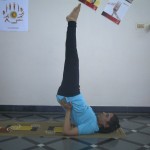 their weakening. Tobacco definitely produces increased incidence of oral cancer. Pan bahar, betel-nut, and spicy food cause more incidence of sub-mucosal fibrous. The conditions, described above, are very prevalent in India, mid-eastern, and south-east Asian countries. In Europe and America, people are mainly accustomed to smoking and chewing Tobacco. Yogasanas, like Sarvangasana, help to stimulate the thyroid gland, which causes an increased circulation of blood in the oral cavity; and this fights germs in the mouth. The thyroid hormone causes increased resistance in the body, as well as in the prevention of dental disorders.
their weakening. Tobacco definitely produces increased incidence of oral cancer. Pan bahar, betel-nut, and spicy food cause more incidence of sub-mucosal fibrous. The conditions, described above, are very prevalent in India, mid-eastern, and south-east Asian countries. In Europe and America, people are mainly accustomed to smoking and chewing Tobacco. Yogasanas, like Sarvangasana, help to stimulate the thyroid gland, which causes an increased circulation of blood in the oral cavity; and this fights germs in the mouth. The thyroid hormone causes increased resistance in the body, as well as in the prevention of dental disorders.
We are living in a modern civilization. The more civilized the country, the more the incidence of psycho somatic disorders. In the oral cavity, this is manifested by the development of a disease called, Lichen plamues. Yoga definitely helps in the prevention and cure of these disorders.
Professional Hazards of Dental Surgeons
Professional hazards of dental surgeons are:
• Low backache
• Cervical spondylolysis
• Pain in the left leg, due to unequal load. This occurs, due to prolonged standing, and taking more loads on the left leg.
• Eye problems – These problems occur, due to continual and persistent concentration into the oral cavity, where the light is dim.
• Varicose veins in the lower limb.
• Skin diseases, like contact dermatitis, which occur due to skin contact with local anesthetic and chemical materials used in the dental clinic.
Yoga Therapy
These above hazards can be prevented, and cured, in most cases, by doing Yoga Therapy.
• Our backbone is very versatile; it twists and swings into a 180 degrees arc, as well as vertically up and down. It supports most of the body weight and provides security to the vital spinal cord. Due to prolonged standing, the backbone gets tired, and thus, one feels pain. Bhujangasana is one of the Asanas, which makes the spine supple and rejuvenates and revitalizes the spinal cord. After practicing it, one feels relief, and in most cases, backache is gone. It also helps in the treatment of cervical spondylolysis. Apart from this Asana, another Asana, which helps in the treatment of back ailments, is Padmasana. Padmasana works wonders for the spinal cord, lungs, and stomach. It keeps the spinal cord erect, healthy, and flexible, like the lotus stalk; and that is why the name Padmasana is given to this Asana. By keeping the backbone erect, and the diaphragm in proper position, the lungs are filled with oxygenated air. This Asana also strengthens the legs, by pulling the nerves, muscles, and bones taut; and, thereby, massaging them thoroughly and keeping them healthy.
• The eyes are the windows of the body; and if they are damaged permanently, nature’s marvels become a closed book. The dental surgeon has to concentrate over the oral cavity, and that is why he is more vulnerable to the development of eye disorders. Asanas, especially Sirshasana, can help both the normal and diseased eye, by producing increased blood circulation in this organ. This Asana also prevents the development of long and short-sightedness. Further, it also tones the muscles around the eyes, and thus gives them a new sparkle. While doing Sirshasana, you must devote a few minutes for doing eye exercises to strengthen the eye-muscles. The eye-muscles are: superior rectus, inferior rectus, medial and lateral rectus, superior oblique and inferior oblique. These exercises can be done in Vipareeta Karani Mudra or Padmasana.
• For the prevention of varicose veins, which occur due to prolonged standing (and the dental surgeon has to do most of his clinical work in this posture), Yogasana, especially Vajrasana, help in the majority of cases. Due to this posture, the blood flow to the lower limbs gets reduced, nerves and muscles are stretched, and thus, varicose veins are cured or prevented. Most of the blood flows, during this posture, to the gastrointestinal tract; hence, it improves the digestion. That is why it is the only Asana, which can be performed, even after taking food.
• Skin diseases, like contact dermatitis, occur due to either allergic problems or poor resistance. The cure for these skin problems lies in strengthening the vital glands, such as the pituitary and thyroid. Both of these glands improve the resistance of the body. So, Yogic exercises, like Sarvangasana, Matsyasana, Vipareeta karani mudra, and Pranayamas, like Sheetali and Sheetkari, strengthen these glands and help increase the body’s resistance to all diseases, including skin disorders.
To summarize, the scientific evaluation of Yoga, towards the prevention and cure of dental problems seen in patients, as well as for the remedy for professional hazards seen in dental surgeons, the following program is recommended:
• Sarvangasana for 2 minutes;
• Sirshasana for ½ a minute;
• Halasana 2 minutes;
• Matsyasana for 2 minutes;
• Bhujangasana for 1 minute;
• Shalabhasana for 1 minute;
• Dhanurasana for 1 minute;
• Shavasana for 5 minutes;
• Sheetali and Sheetkari for 5 minutes;
• Inflating the cheeks to strengthen the buccinators muscle for 1 minute;
• Ujjayi for 5 minutes;
• Meditation for 15 minutes
Thus, by devoting 40-50 minutes, on an average every day, you will be pleasantly surprised to know that you remain fresh mentally and physically and away from professional hazards, because the practice of Yoga rejuvenates and revitalizes all the organs of the body, including the vital organs, like the heart and brain.
Aum Shanti
If you feel inspired by this article, feel free to publish it in your Newsletter or on your Website. Our humble request is to please include the Resource as follows: –
Courtesy: Dr. Rita Khanna’s Yogashaastra Studio.
A popular studio that helps you find natural solutions for complete health.
Also conducts online Yoga Courses & Naturopathy Guidance.
Mobile: + 919849772485
Ph:-91-40-65173344
Email: yogashaastra@gmail.com
Website: www.yogashaastra.in
Dr. Rita Khanna
Dr. Rita Khanna is a well-known name in the field of Yoga and Naturopathy. She was initiated into this discipline over 25 years ago by world famous Swami Adyatmananda of Sivananda Ashram in Rishikesh (India).
She believes firmly that Yoga is a scientific process, which helps us to lead a healthy and disease-free life. She is also actively involved in practicing alternative medicines like Naturopathy. Over the years, she has been successfully practicing these therapies and providing succour to several chronic and terminally ill patients through Yoga, Diet and Naturopathy. She is also imparting Yoga Teachers Training.
At present, Dr. Rita Khanna is running a Yoga Studio in Secunderabad (Hyderabad, India).
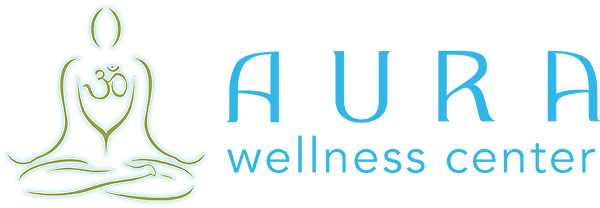
Thank you for this inspiring article. I will practice These asanas. It’s wonderful that you Share your Knowledge with all of us.
Sincerely,
Kay song
Hi Dr. Ritu,
This article is one of the best article which I have ever read. i have enjoyed doing all the above said asanas for a long time. But after i turned 30, I suffer from low back pains now and then when I practice Bhujangasana, Sarvangasana, Vipareet Karni along with Patchimothasana. Why does this occur to me, since I have been practicing them for the past 8 years. What may be the problem?
Whenever I read the back strengthening asanas are these, Why do back hurt after practice? Can You suggest some solution for them?
Try setubandhasana followed by Merudandasana for a week and see the result yourself.
Ritaji
Exccellent article. no comments.
Great article on cures for dental ailments and dentist’s treating those ailments.
Well written.
Sirshasana stimulates more blood to flow to the pituitary gland, which, in turn, maintains the strength of our teeth. Thanks for sharing this valuable post.
Highly informative article and will help one and all in the short as well as in the long run. Thank you madam for this wonderful article.
Dear Dr. thanks a lot for the article, it’s very helpful. I have to do an endodontic treatment in one of my tooth and I always have this problem, I feel a terrible pain when a cavity is repaired with drill. Anesthesia seems to do nothing on me, and I’m terrified aobut doing that treatment, but my tooth is broken. Can you tell me about some pranayama to avoid the pain?